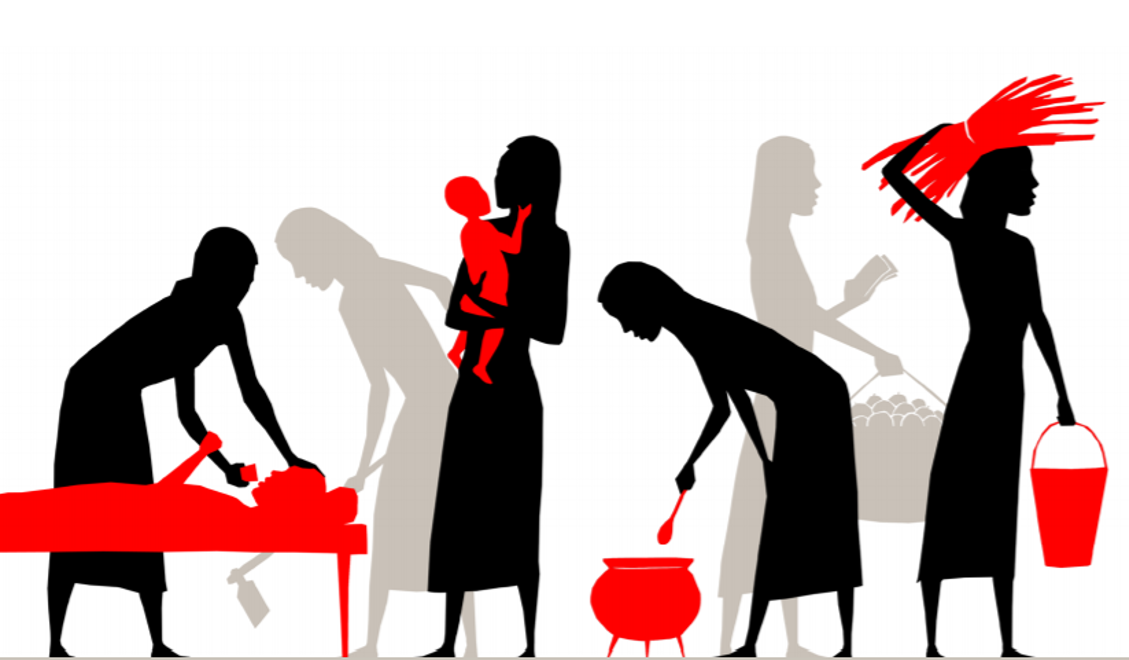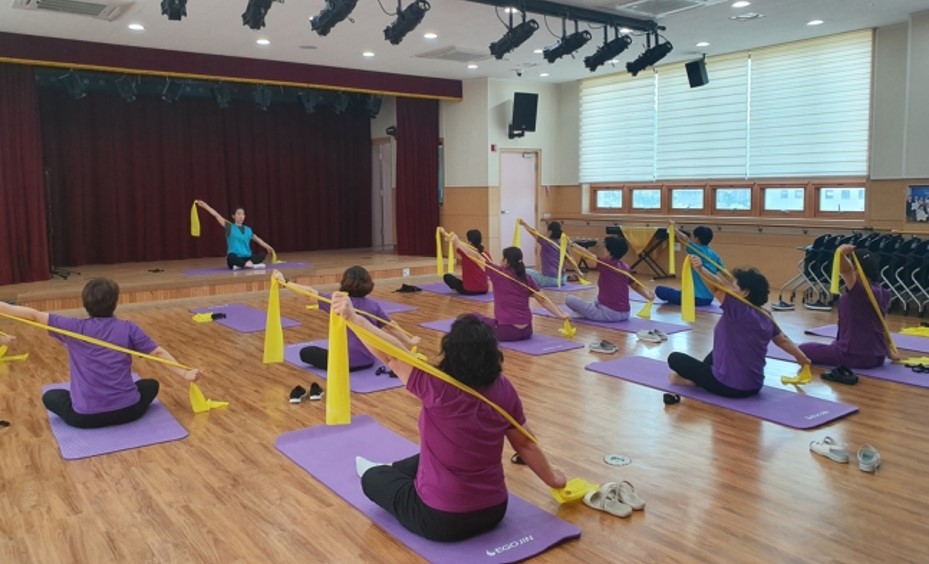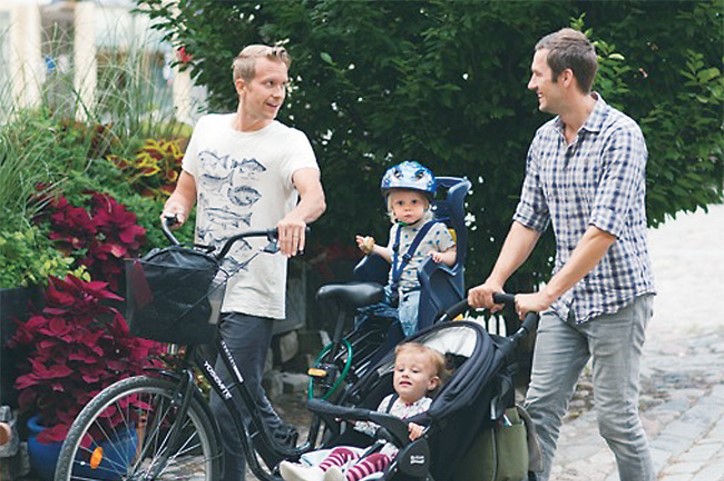The Invisible Heart: Undervalued Care
Works

© Illustration by NickPurser Design
Earlier
this year in May, a caregiver for the COVID-19 patient died of an infection in a hospital
of Gyeongsang Provinces. She herself was also a 77-year-old woman suffering
from diabetes. Meanwhile, she had been paid less than the minimum wage, even
traveling long distances to go to work. However, the death of this elderly
woman garnered little attention. It contrasts starkly with the death of a
confirmed doctor in early April which was mourned nationally as “the first
death in the medical profession.” While it is said that every occupation is
equally honorable, in reality, the most essential and risky labors seem to be
ignored.
This
case explicitly shows us how much care works have been undervalued in society. People
admire the advent of the “Ontact” era where they can sustain their everyday lives,
such as online lectures and “Untact” consumption. At the backstage, however, care
workers are still taking risks for people, exposing themselves to the virus. Even
before the virus, it has always been essential that they care for the elderly,
children, patients, and the disabled. Nevertheless, they lack the respect they
deserve and have been suffering in harsh conditions. In this sense, The
Sogang Herald analyzes the background of their harsh work conditions and
seeks for reform measures for a better society.
Before
going on to the main issue, there is a need to set the range of care workers.
Generally, care workers involve all the people engaging in nursing, elderly
care, infant care, housework, and personal assistance for the disabled.
Substandard Work Conditions of Care Workers
First of all, care
workers are paid minimum wage or even less. Also, they have to deal with unstable
employment. They usually belong to private institutions and easily lose their
jobs depending on the situation of the clients. In a crisis like the recent
pandemic, such unstable employment situations are getting worse. According to the
Seoul Geriatric Care Helper Association, 20.7% of geriatric care workers
abruptly lost their jobs due to the pandemic. They are usually responsible for
the livelihood of their families, so such a situation is very fatal for them.
37.7% of the survey’s respondents said they feel anxious about being laid off
and receiving low income.
Furthermore,
the care workers, especially nursing and elderly care, face hard physical
labors which make them suffer from occupational diseases like musculoskeletal
diseases[1].
However, a care worker is not legally recognized as “worker,” which refers to being
subordinated to the employer, but instead recognized as an individual business due
to the flexible employee hours. Thus, they are not protected from diseases and
accidents without employment insurance being applied. In addition, sometimes they
are afflicted with violence. According to a survey conducted by the Korea
Institute for Health and Social Affairs (KIHAS) in 2019, one fourth of care
workers experienced verbal violence from service recipients or their families.
The people who were subject to physical violence accounted for 16%, and sexual
harassment 9.1%. Even in this situation, many of them continued to work for
their livelihood. In this way, care workers encounter severe work conditions,
which also imply how much their works are undervalued.
Then,
Why Are Care Workers So Socially Undervalued?
The main reason is
the gender stereotype[2]. Since
women traditionally have been in charge of care working at home without pay, people
tend to think care works are not professional and are negligible tasks that any
woman could do “inherently.” Of course, it is true that most care workers at
present are low-educated women.
However,
it is not inborn that they do the work well. They become proficient over a
period of time. In fact, the skills for taking care of people are complex, requiring
emotional as well as physical skills. As for nursing the elderly, for example, changing
the urine tube of the patient requires emotional skills to commune with the
patient not to make them feel ashamed, along with the physical skill. As for childcare,
it is necessary to have not only physical but also emotional skills to reach out
to the child, getting down to the child’s level. Such learned emotional skills
have been disregarded and underpaid despite the importance. It is only when
people recognize the wrong perceptions towards care works that they will treat the care worker as “worker”
and make efforts to train the acquired skills to them, which is going to
increase the quality of care services. However, the government has overlooked such
properties of care work in implementing care services.
Care
Industries Built on the Sand
In the phrase of
the book The right not to be lonely[3], it has
not been long since care was recognized as a national task. For a long time,
women were responsible for taking care of the family. When that was impossible,
the government had taken minimum responsibility by letting people live in
facilities, deprived of freedom and dignity. The need to ensure a decent human
life has only recently arisen. The demand for care started to surge at the same
time, encountering aging, family restructuring, and increasing economic
participation of women. In this urgent situation, the government has provided
care services indiscriminately without deep consideration of how to raise the
quality of care.
As
a result, now the side effects of the care industries built on the sand are being
witnessed. The first is in elderly care. Ever since 2008 when long-term nursing
insurance was introduced, the government lowered the entry barrier to run geriatric
care facilities. Consequently, lots of private service providers started to appear
and struggle for their survival instead of good care within infinite
competition. Professor Yang Nan-ju[4] of
Daegu University (Dept. of Social Welfare) said, “Current elderly care services
are working according to profitability. As care workers have been underpaid and
the elderly have become business targets, the quality of care services deteriorates
and their dignity is humiliated.”
There
is another side effect in childcare services. Earlier in 2019, there was an
incident in which a worker in childcare service supported by the government abused
a 14-month-old infant. The worker said, “I did it just to discipline the child.”
Looking into the background of this case, the government did not recognize the
care workers as “workers,” so they were not given the professional training that
could have corrected their wrong upbringing habits from the start. Furthermore,
the government has only provided financial support and depended on private
institutions, so it could not properly manage the service and the workers’
conditions. Nevertheless, most care workers are doing well with high
responsibility bearing devaluation, as the survey in 2018 demonstrates 96% in
satisfaction rate of approximately seventy thousand families using the service.
However, when individual care ethics collapse, the government’s policy would expose
its hole. ▲ An incident where a caregiver had abused 14-month-old baby for 3 months
was disclosed in the national petition in April, 2019. (© YTN)
▲ An incident where a caregiver had abused 14-month-old baby for 3 months
was disclosed in the national petition in April, 2019. (© YTN)
Both
cases in common imply that the fast-growing care services depending on private
institutions have lacked the quality, as the work conditions of care workers
deteriorate. If these side effects continue, the Korean society will not be
able to deal with low birth and aging in the crisis of care blank.
For
Now, Fundamental Measures Should Be Taken
First of all, it
is necessary to reinforce the publicity of care services so that the care
workers work in better conditions and provide high-quality services. Actually,
the care institution run by the government has far better facilities and work
conditions. An example is the Seoul Sanatorium, the only sanatorium run by the National
Health Insurance Service (NHIS) and built as a role model of elderly care
service. Since a public institution does not have to save proceeds and take the
burden of building rents, it spends most of the proceeds for labor cost (72%)
and facility operation. As a result, the care workers here are receiving
additional pay along with the minimum wage. Also, they enjoy welfare such as
childcare leave and an additional salary for long service. It contrasts to
private institutions where they used to be dismissed before long service. In
addition, they take more pride in working at a public institution, and better
treatment and recognition lead to more sense of responsibility to care for the
elderly. Currently, very few government-established sanatoriums exist in the
entire country (2.1%, 110 of total 5326). The government should arrange more
finances to install national care centers.

▲ The Seoul Sanatorium provides Pilates classes twice a week for the elderly caregivers suffering from musculoskeletal diseases. (© Hankyoreh)
Along
with the reforms, the Korean society should gradually change the sex-biased
care culture. If the care works still remain solely as women’s jobs and the
gender stereotype remains uncorrected, the care workers would still be socially
undervalued despite the diversified efforts to improve their work conditions. A
caring culture in which men also participate together in the home should be
fostered. The policy on parental leave in Sweden is the best reference that
changed the sex-biased system through policy. Since the government of Sweden
introduced the system for the first time in 1974, it continued to inform people
about the new paternal image participating in care works and convinced that fathers
have the “right” about infant care. After several years of trial and efforts,
it finally came to increase the usage rate of parental leave up to about 80% in
2017. Korean society also could change like Sweden with continuous efforts to break
away from stereotyped gender roles in caring.

▲ In Sweden, the usage of parental leave is universal, so the fathers caring their children are easily found. (© KyeongGi Ilbo)
Conclusion
Nancy Folbre, an
American feminist economist, called care work “the invisible heart” in her book.
Adam Smith overlooked that people should take into account the value of the
invisible heart with goodwill apart from “the invisible hand” with selfishness
to make the society work. Individuals also need to look back on if they have
discounted the true heart in care works with academic elitism and gender bias.
Now it is time to make efforts to improve the harsh work conditions of care
workers. Such efforts are also necessary to deal with the crisis of the care
blank in the low birth and aging Korean society. The high quality of care
services is not a matter of others, but the matter of our parents and our
children in the future. Following the fundamental measures, the Korean society
could make the world where men and women together, family and society together take
responsibilities for the care works.
By
Choi Ye-song (Int’l & Social Reporter)
dpthd159@sogang.ac.kr
[4] Soa Baek, 2019, “South Korean
recuperation report: third section alternative① when visiting ‘public’ Seoul
Sanatorium”,
Hankyoreh
